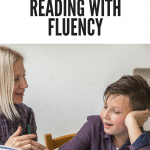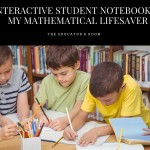I taught an 8th-grade writing class my first year of teaching. The standards allowed for 3 essays: one argumentative, one informative essay, and one narrative. A narrative essay was a strange name for a short story to me. I didn’t entirely understand the difference until I investigated the goals of the narrative essay standard. The expectations of a narrative essay were rigid, formulaic, and worn out. We did as the standards instructed, but I set aside time for students to write something of greater interest.
Nothing captures the mind of a middle schooler like a tale of horror. Class material based around the frightful works of Octavia E. Butler and Shirley Jackson was common in my classroom around Halloween. I finally had a student ask if they could write their own scary stories as an assignment. I told them what I knew about the standard’s expectation, but my gentle rejection did nothing to stop pervading interest. Like wildfire, students spread the idea until I felt I had no choice but to plan a writing prompt for a scary story. If I struck down this professed interest in school work, what kind of teacher did that make me? The results were magnificent, and the experiment proved worthwhile.
“…consulting students enhances student commitment and capacity for learning…transforming teacher-student relationships from passive and oppositional to more active and collaborative.”
-Rudduck and McIntyre (2007)
The dynamic between a teacher and student is a relationship worth fostering. I wish I could say that I witnessed more positive relationships being formed than negative ones, but that was not always my experience. Understanding how to develop this bond is something that can be exercised before a teacher enters their own classroom. Cook-Sather created her own program, Teaching and Learning Together (TLT), which is used at a university level to educate prospective teachers on how to better incorporate students’ perspectives on the education they receive. To my knowledge, this is not a common practice in teaching programs.
The potential of developing bonds that encourage teachers to listen and students to reflect is not lost once a teacher enters the field. There are several ways for teachers and administrators to include student input. A biannual student-teacher forum based on the school’s approach to learning is a beneficial method when furthering curriculum development. More anonymous methods can be arranged in the form of online submissions, a method used by teachers already to increase the participation of less vocal students. It is as simple as individual teachers asking their students in class what, or how, they think. The success, again, is not dependent on how you receive the voices of students but on the actual application of the feedback.
Businesses offer surveys to receive customer input. One high school did the same thing. Sammamish High School received recognition from Edutopia for its dedication to Student Voice. One student was quoted saying, “I truly appreciate that [recognition from the school] because it makes me feel welcome and part of the SHS community.” A comment like this has the potential to fuel the motivation of students, teachers, and administrators to excel in harmony.
“Tell me and I forget, teach me and I may remember, involve me and I learn.”
― Benjamin Franklin
People tend to be creatures of routine. Teachers are no different, using slight iterations of lesson plans from years prior, or never plunging into new styles of teaching. After a certain point, classes can all look the same to a student from this droning repetition. I know as a teacher I grew tired from using the same type of assignment over and over again. Secondary students, having to endure 7 classes a day, can be expected to develop the same boredom. As every teacher knows, a bored student tends to seek out distractions. Implementing Student Voice may not end the rise of student disinterest, but it does work to reverse the flow of interest back toward curiosity, the priceless quality of any good student.
As teachers, we shouldn’t feel as if we are pandering in our efforts to reach our students. You don’t have to rap the periodic table of elements or dress up like a famous author for a day to get students interested. But if you did, can you imagine the impact it would have on overall engagement?
I can already hear the traditional teachers protesting because of the lack of time in a school year for anything but the fundamentals. I disagree. With a few dozen standards to cover in well over 150 days of school, time is not of the essence. Time is plentiful. Just because you added a dash (or handful) of pizzazz to a lesson doesn’t mean you can’t work toward the mastery of a standard, either. Student input is not meant to replace your expertise; it is meant to amplify your ability to convey the content of your class in the best manner possible.
Language Arts, I will admit, has benefits that other core subjects, even some electives, do not possess. In Language Arts, you get to work with lyrics in music and many forms of storytelling. If a topic exists in the world, you can be certain that someone has written about it. My reading class thrived on this fact. Groups of students came into my class expecting the standard rotation of reading: a few short stories, some poetry, and maybe a play or a novel. But I did not fall in love with reading because of the books I found assigned to me. There were plenty of worthwhile books in my days as a student, but the written work I connected with the most was what I found on my own time and chose to read without the expectation of a grade.
My experiment was simple: I gathered their favorite topics in the first week of school and, as weeks passed, utilizing the more common topics, such as food or music, to anchor the subject matter being taught that day. The overall engagement level of the class benefited from the recognition that their interests were being used in the curriculum. Students explored their intellectual curiosities with newfound interest. They were empowered by being heard and gained agency in their education when they were entrusted with the ability to choose some of the shapes of their education.
The more I let them choose, the more I learned about their continued interests,
which I could continue implementing in my instruction.
My expertise lies in Language Arts, so I have been left to observe how other subjects have fewer resources to jazz up the content than language arts, but creativity can span across all subjects. I won’t try to pretend that I am anything other than a novice scientist, mathematician, or historian, but, again, I pay attention. What I have seen from open-minded teachers whose purpose lies in those of the students’ interests is impressive. I have seen chemistry teachers go out of their way to put on a spectacle of chemical reactions. Math teachers use real-world applications of math that are relative to young students, such as the cost of running a business. We are, after all, trying to prepare them for the real world.
The student is not always right, but they are always the student. As professionals, we can sift through the honest suggestions and the comical ones. Of course, I would never replace a book for a movie, but if there is a difficult scene to comprehend in a text, it wouldn’t hurt for me to show that clip from the movie adaptation in order to benefit from clarity. The input, I believe, will surprise you at first at how productive it can be. I was hesitant about asking students for their feedback when I began, but I ended up asking every student point-blank. The positivity I received from the undiscovered interests of students, interests they would have been happy to share all along, was uplifting.
One of the most popular topics in my class was what every student wanted to do for a living. These possibilities sparked interest way beyond the surface level of these careers. Using the specific details of their dream jobs, active involvement blossomed from the seeds of interest I requested from them in the first place. This is a practice that needs to become commonplace in education.
Students are the reason we gather every fall and celebrate at the end of every spring. They are the reason we painstakingly work to teach them everything they need to be a successful member of society. Without students, schools lack purpose. There is a wealth of untapped knowledge and an entire perspective of education that has always existed. Students remain, far too often, passive observers of their teachers. We all want students to become more involved and engaged. Give them a stage, ask them a question, and listen with a passion to what they say, and they will do just that.
I am not condoning a business approach to education. I am merely attempting to create a common ground with a neutral example everyone can understand. For the sake of student success, we should not turn away from any possible methods that make us better teachers and our students better learners.





